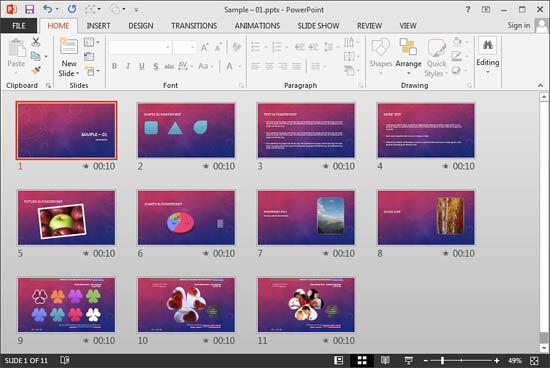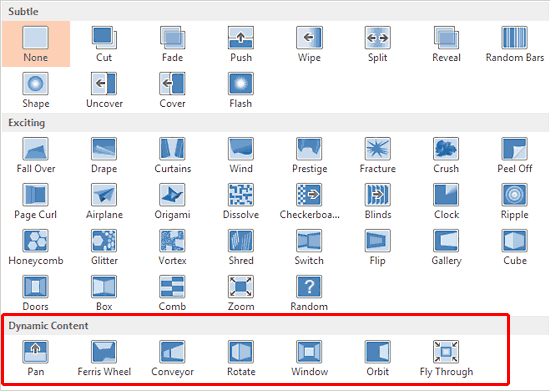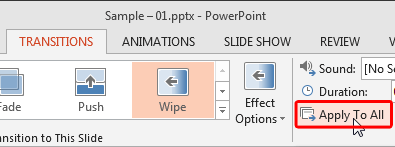Explore Dynamic Content transitions in PowerPoint 2013 for Windows. Dynamic transitions occur on all areas of the slide except the background.
Author: Geetesh Bajaj
Product/Version: PowerPoint 2013 for Windows
OS: Microsoft Windows 7 and higher
Dynamic Content transitions were first introduced in PowerPoint 2010. When these transitions are applied to your slide, the actual transition occurs on all areas of the slide except the background. This action makes your content move independently on and off the screen. PowerPoint 2013 provides seven different transition effects within the Dynamic Content category. Do experiment with these options for direction and timing to create some great looking presentations.
A sample presentation with all dynamic transitions can be seen later on this page.
Open any presentation that already has a few slides of content. It is helpful (but not necessary) if your slides have a background that's not just a solid color, as in the example slides, as shown in Figure 1, later on this page.
Follow these steps to add Dynamic Content transitions to one or more slides in PowerPoint 2013 for Windows:




Sample presentation shows all Dynamic Transition effects available in PowerPoint:
Click below to view this presentation on YouTube
See Also:
13 08 06 - Slide Transitions: Dynamic Content Transitions in PowerPoint (Glossary Page)
Dynamic Content Transitions in PowerPoint 2011 for Mac
Dynamic Content Transitions in PowerPoint 2010 for Windows
You May Also Like: How to Disagree Constructively | Madagascar Flags and Maps PowerPoint Templates




Microsoft and the Office logo are trademarks or registered trademarks of Microsoft Corporation in the United States and/or other countries.